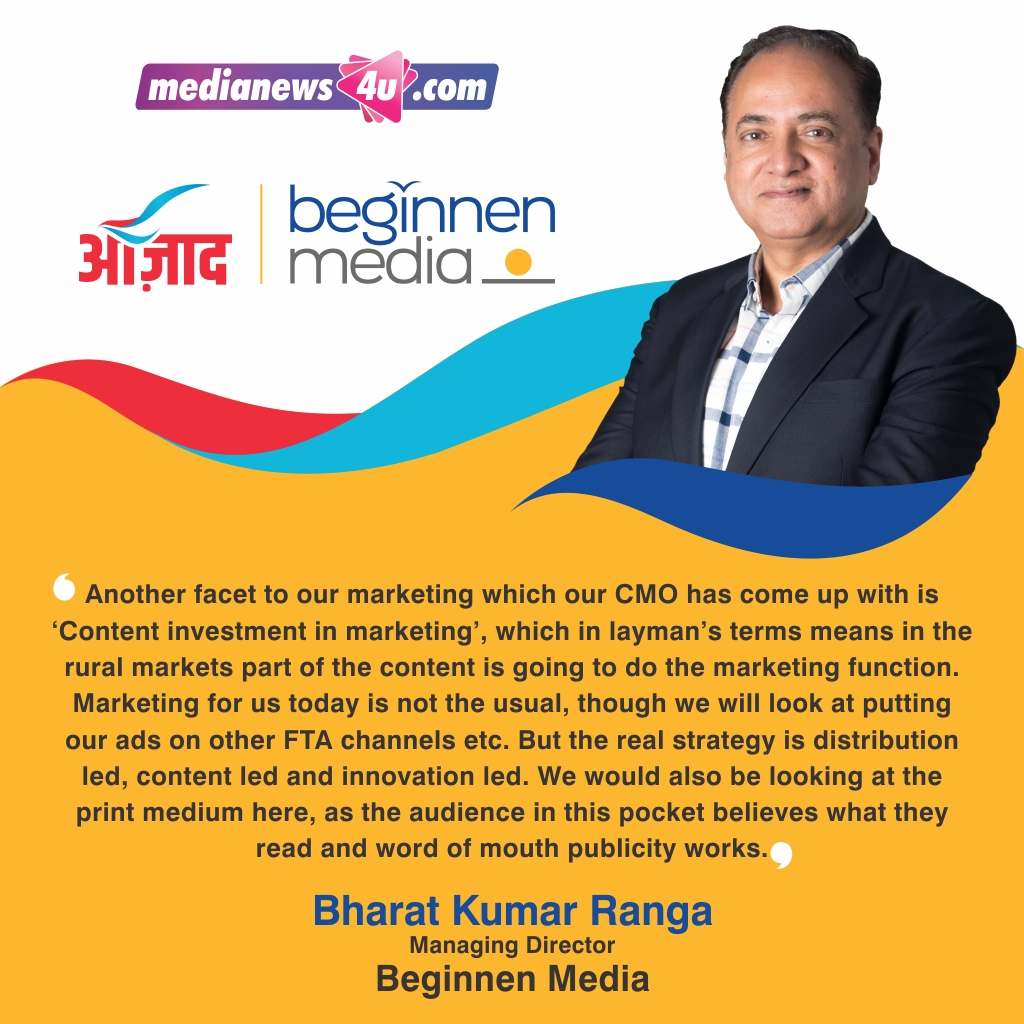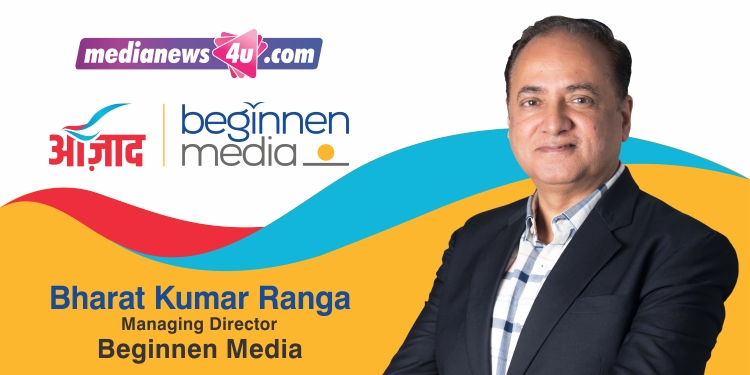Beginnen Media was launched in October 2019; Beginnen Media is the German word for ‘Commencement of Something New’. As the name suggests, the Vision of the organization is to pioneer a ‘People Specific’ range of products and services. The first offering from Beginnen Media is Azaad, India’s ‘FIRST Premium Hindi Entertainment Platform that will feature Content Exclusively for the ‘Rural Mindset’. It’s a new model in the broadcast business with a focus on audiences in Rural India.
Bharat Kumar Ranga, the Managing Director is a stalwart whose influence in the broadcast business is a shining example and he continues to inspire innovation in the Media & Entertainment industry. In his previous role, Ranga was heading the International and new Domestic business for over 18 years at Zee Entertainment Enterprises Ltd.
Innovation is a strategic value at Beginnen Media, a fundamental part of its corporate culture.It believes in the power of collaboration and its core values include People Focus, Inclusion, Diversity, Empathy, Market Focus and Accessibility. Azaad is available on DD Free Dish and selects DPOs in the heartland markets from May 2021 with the premise of being ‘People First. Rural First.’
Azaad personifies the Rural Mindset’ defined as ‘Unapologetically Real Indian’. i.e. URI. With a USP of creating content that would make it the preferred entertainment channel for the URI and a strong belief in the ‘Power of Engaged Connections’ with its stakeholders. The building block of the brand Azaad has been to service a ‘Latent Demand’ – An Underserviced Audience Segment with a Huge Untapped Opportunity.
In an exclusive chat with MediaNews4U, Bharat Kumar Ranga – Managing Director, Beginnen Media, says, “I am still a student at heart; there is an excitement to try something new. The area we are exploring is new, it is a super mass category and we want to make a small space for ourselves. Not an easy thing but we are working on it. I am excited and energized about this whole journey”.
The broadcast industry
The Broadcast industry has not changed much, but the fact that it was easier then and has become difficult now. When you are new to whatever you offer the audiences they love it, they have continued with the same SaasBahu formula for years now. Now there is a crux situation as there are other alternatives to TV, like the digital platforms and OTT. TV was mass but today OTT has also come down from its niche offerings to cater to the mass audience.
Rural Viewer
The rural mindset does not have to do with where you live; the mindset is part of your culture. Anyone who has moved away from a semi-urban to urban, the cultural mindset is there to stay; one will enjoy what is offered in a way of entertainment on a daily basis but culturally if an issue is discussed differently then this content is appreciated much more.
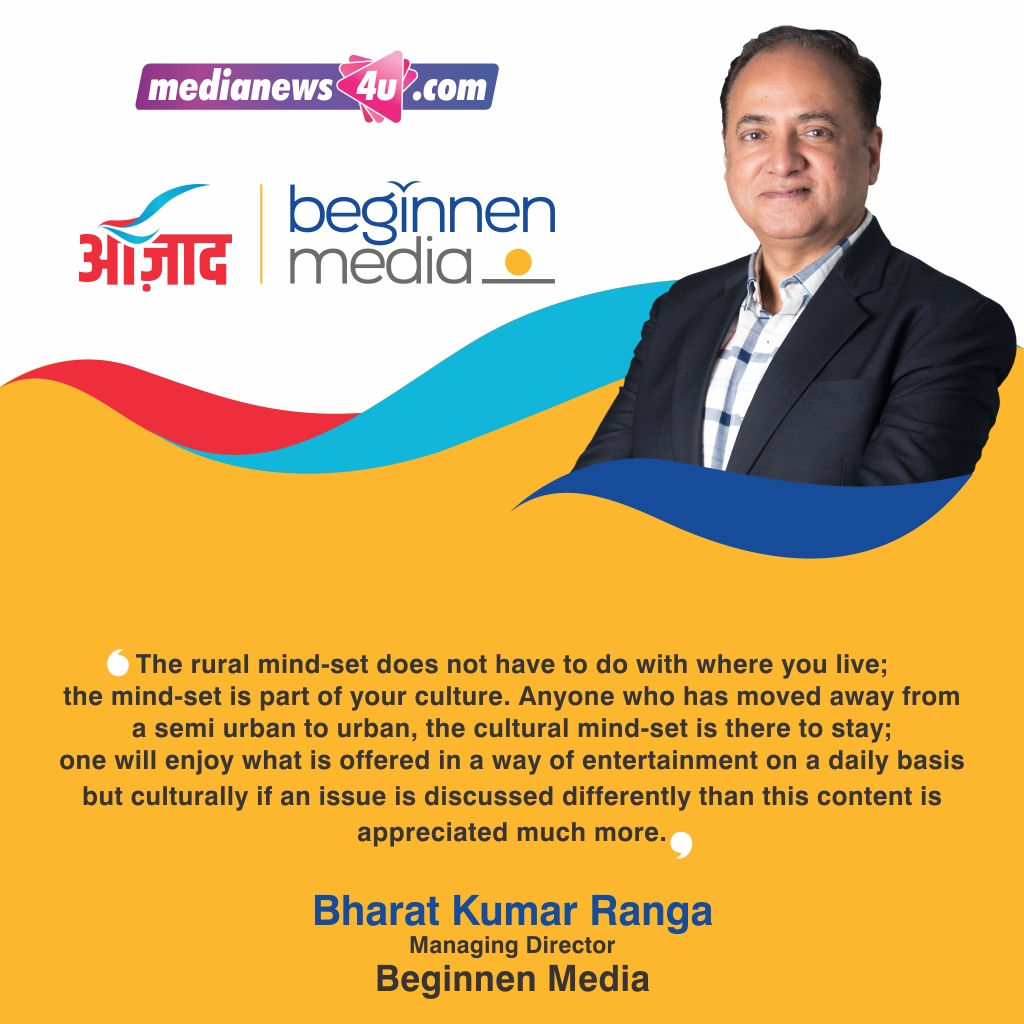
Power of Engaged Connections
Consumer specific entertainment platform is what we are launching and not a general entertainment platform. The GEC has a currency called viewership, and to mention the kind of digital imprints they get thru their digital platforms. As they are general this broad currency works for them but because we are specific, I think we will not survive if we have this same broad engagement currency. The only way this model will work is when we are able to engage and deliver our content to our viewers. The connection has to be engaged. We are a niche channel that will cater to the super mass category. In the beginning, our ambition is to get it right then the bubble will keep growing. But if we don’t get it right in the beginning then this model will not work.
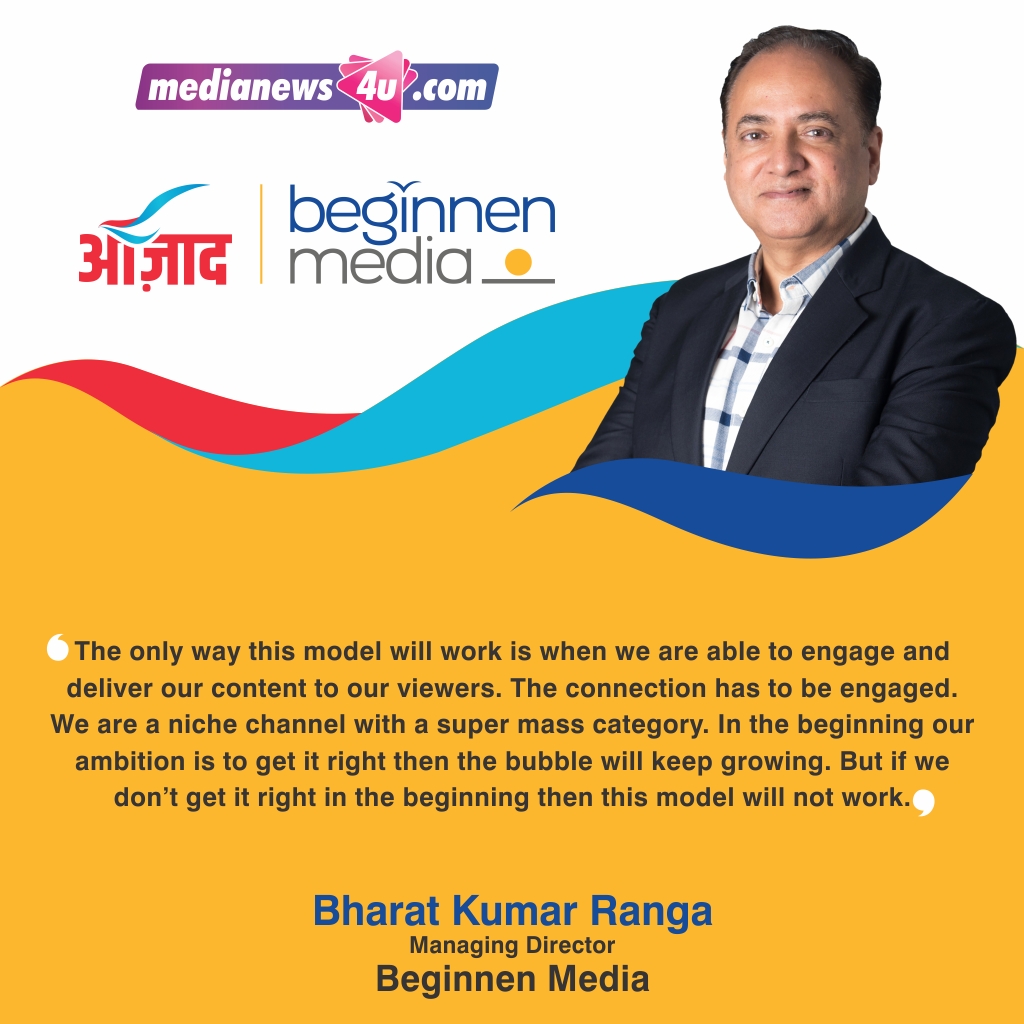
Latent Demand
The reason I say that the demand is latent because it is not seen. The rural audiences today are happy with the content which is made with an urban mindset, as we are in a supply-based market and not a demand-based. Today nobody is focusing on what that audience needs, it is similar to what the regional players did then and they just dubbed the national content in the regional languages. Then Sun TV happened in the TN market which has the highest penetration and they decided to look at content differently, also wanted to know if this audience would enjoy content set in their surroundings and language and decided to address this latent demand. Thus the production of original content happened and it worked very well for that market.
The GEC broadcaster feels that as the content is in Hindi why should it be addressed differently. I realized that on the one side Hindi is a national language but actually it is a regional language. Hindi has its own cultural nuances in different states. Now for Hindi content to be enjoyed in various parts we need to cater to their tastes, deep dive, and create content and if we are able to do it then we have truly engaged with our viewers, though our content is in Hindi, but in the regional Hindi with a mix of the local culture. This will be totally different from the content that is being offered now. Also as dialects differ, the best way to address is to identify the characters you want the audience to engage with then that language works. What I have learned from the International market is that for an area-specific or region-specific content to work for a mass audience one has to be honest to that specific content and not generalize it.
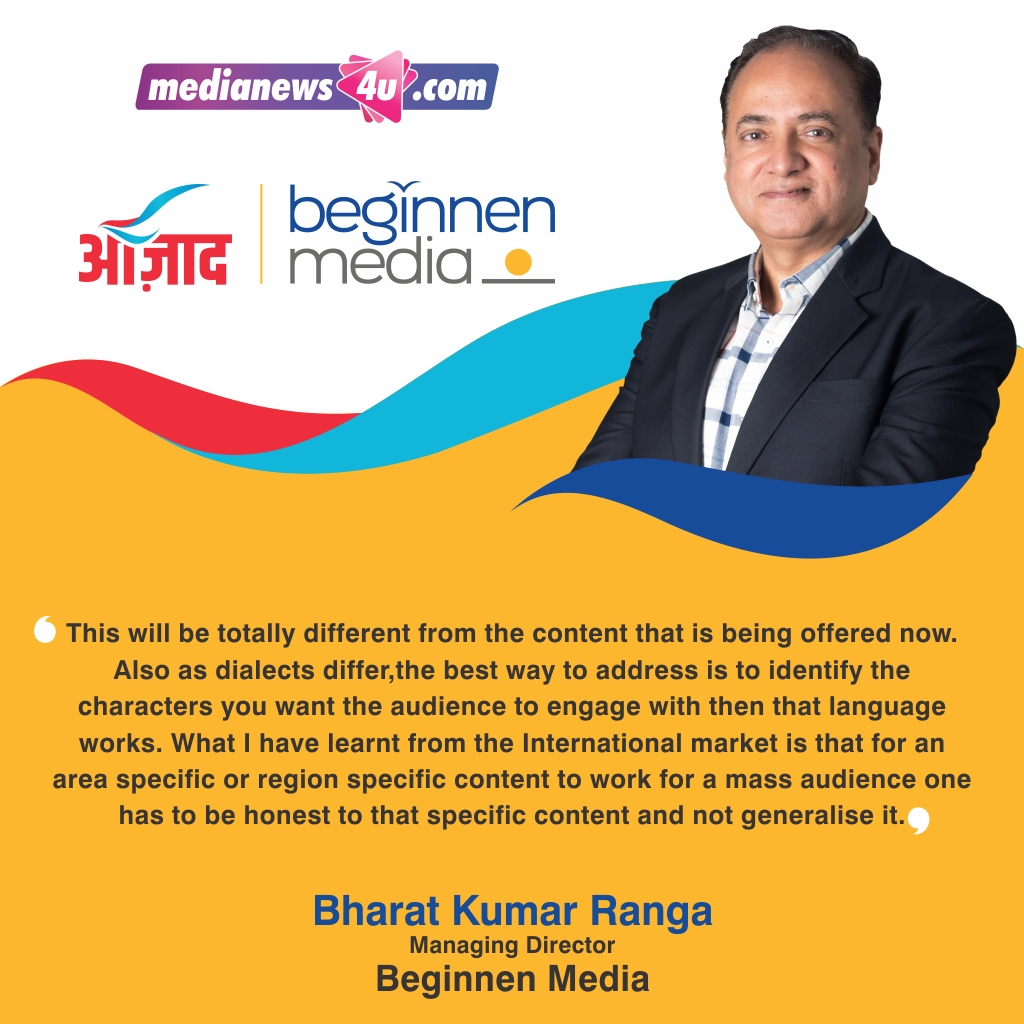
Azaad v/s FTA
FTA & Pay are economic classifications, people who don’t want to pay for content watch FTA channels, this audience is there both in the rural and urban areas. To run an FTA channel you need different thinking, as the viewer is not paying, the broadcaster can decide to dish out whatever content that is available with the channel. 65% of our population lives in the rural area, and the balance that lives in the urban areas that form a good part is from the rural areas, and this is the super mass category. A good part of them is ready to pay for content so FTA & rural are not the same.
ZEE Anmol which was launched by me was an FTA channel but now is a pay channel. DDFT is the only FTA channel with a maximum reach across India as far as linear storytelling goes. Our major competition is all the FTA channels, even DD. FTA channels which are largely there in the rural areas have an elasticity, rural audiences are very elastic, they can really like a show or reject it completely. This audience is not very easy to cater to, but they are also highly engaging and as long as you are honest they will be there for you. This audience also loves to experiment and try out newer things far more than the urban audience. You need to take far more effort and energy to cater to this audience.
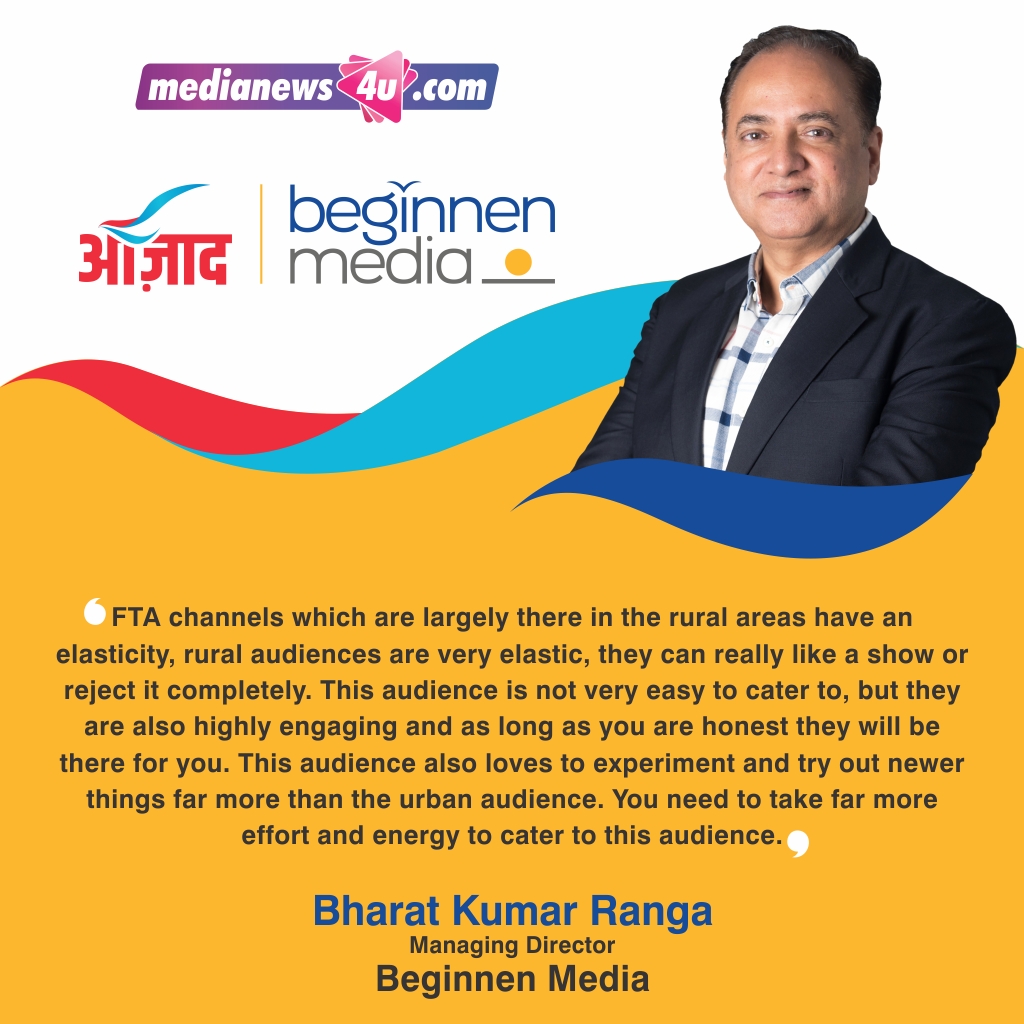
GEC v/s OTT
It is a lesson I have learned that when there is a problem there is an opportunity to upgrade. All the pay channels today have an amazing opportunity to upscale.TV is going nowhere and the elasticity exists in all whether it is FTA or pays channel if they have to do phenomenally well they have to change their model, which we are planning to do.
At Beginnen Media we are trying to build a consumer-centric model of entertainment by which I mean, if you think like a consumer you can build an entire model around that then you have to be un-creative. In our understanding of being exposed to both domestic and international audiences, the transition is not from the broadcaster but has to be from the creative industry. Today GEC is mindlessly churning out content but the consumer of today is already exposed to better content thanks to the advent of OTT. Pay channels need to work hard to find out what a consumer wants then they need a new formula, which can work for the next 10-12 years like how the SaasBahu saga has worked. Finding a new formula is not difficult as there is an inherent power of TV storytelling. This is where the regional channels score as they have not deviated from their focus on the consumer.
Content
On the face of it, our content is not going to be different, out of the 100 units of work we have done, 75 units are on understanding the consumer. If you get your first one right then the balance will follow. For the first time, we are making stories from the audience’s point of view, capturing their feelings, their emotions and so nothing is readymade. Most of our time has been spent on where do we get these people and stories from. After completing the process of consumer understanding, we got down to writing a brand pitch for the producers.
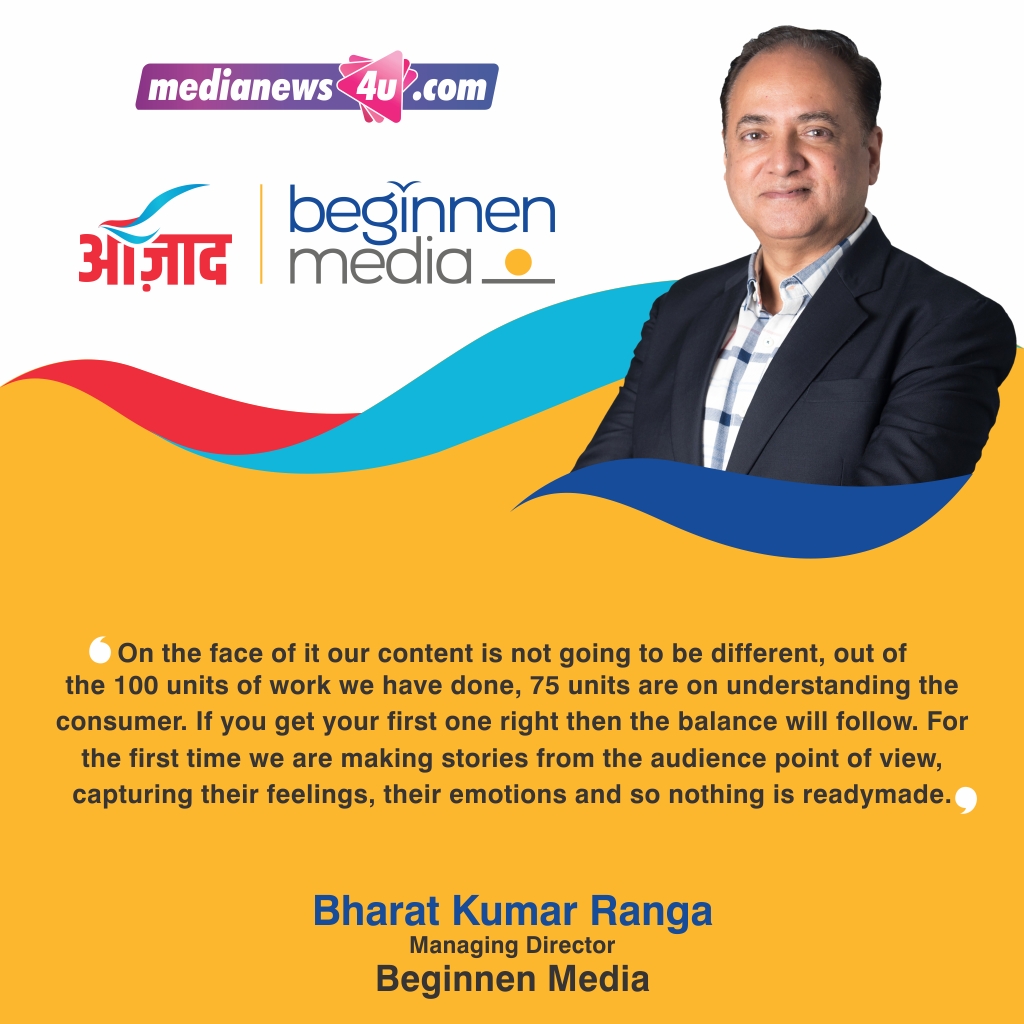
Our experts like Santosh Desai, Manish Bhatt of Scarecrow, and people who are still rooted in their small-town understanding and have given us insights into consumer understanding. We realized that it is not going to be easy on the content makers, so we decided that 50% will be on what they are familiar with and the rest 50%which we will create will be closer to our thinking.
One of our themes is based on the farmer’s agitation, Santosh and his team spent 6 weeks traveling in those areas and came with new insights. These themes are based on what the consumer wants to watch not what the content team wants. Our story will be like any other GEC but our characters will be someone he can relate to. The stories will be told from the consumer point of view i.e. the story will be told from the rural point of view and not the urban view.
Distribution
We have content and currently, we are on DD Free Dish and 40-45 independent cable operators catering to the rural households, the channel is airing a few acquired old TV shows and BARC has also started monitoring so we know where our reach is. Our launch will coincide with our shows and distribution. We are in talks with all the stakeholders. We are in the last stage of talks with all DTH players.
Advertisers on Board
We have about 8-10 Advertisers, our conversation with them is a lot more than the GEC conversation. They want to associate with us because their brand can reach the consumer in the rural pockets. It is not hyper-local but we are offering much more, we are offering a digital environment. For an advertiser, there are three main areas of concern on the digital platform, the consumer they are addressing, what he/she is watching, and is the message clear. Also on the digital platform like Youtube, there is wastage and that is what we are going to address, the environment we are offering is clear, our content is relevant to the said TG.
Today every brand wants to reach out to the audience in the rural pockets, as they are digitally savvy and have the money power to buy. The channel opens up an opportunity for a lot of advertisers.
Marketing Strategies
Our marketing is a combination of many things; distribution is very critical, paying for the expensive DD Free Dish, and independent cable operators. Reaching out to all these players is a critical part of our marketing investment. We are looking at amplified viral messaging in the rural pockets. If the messaging is clear and honest even if it is done in 40 -50 clusters of villages it will go viral instantly. Another facet to our marketing that our CMO has come up with is ‘Content investment in marketing’, which in layman’s terms means in the rural markets part of the content is going to do the marketing function. Marketing for us today is not the usual, though we will look at putting our ads on other FTA channels etc. But the real strategy is distribution-led, content-led and innovation-led. We would also be looking at the print medium here, as the audience in this pocket believes what they read and word-of-mouth publicity works.
